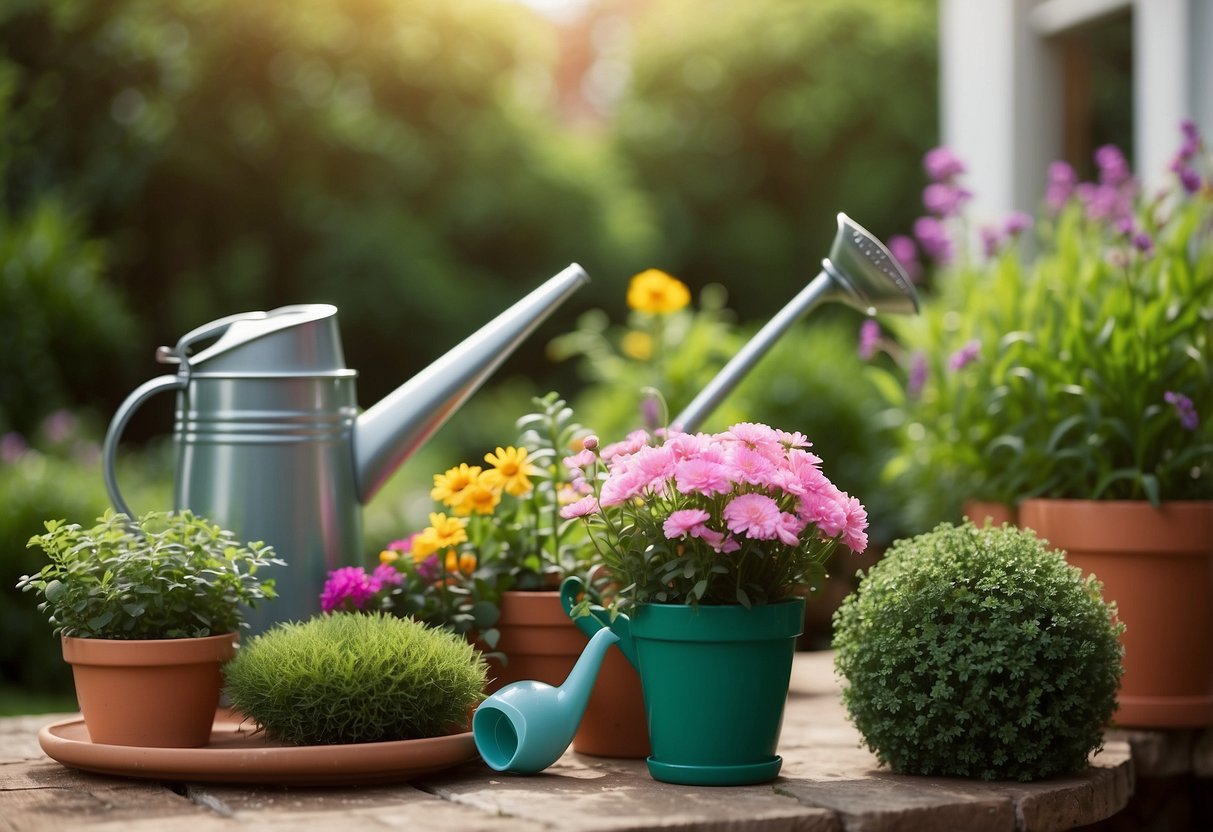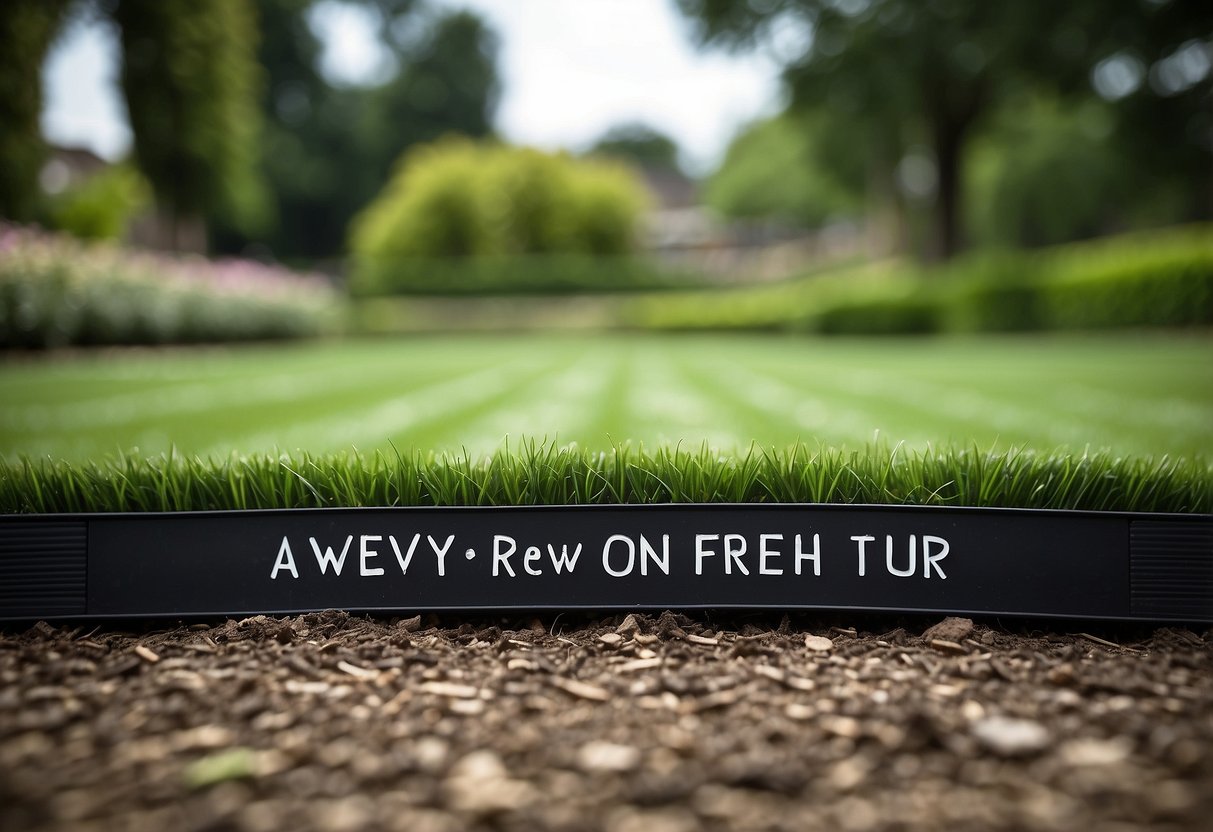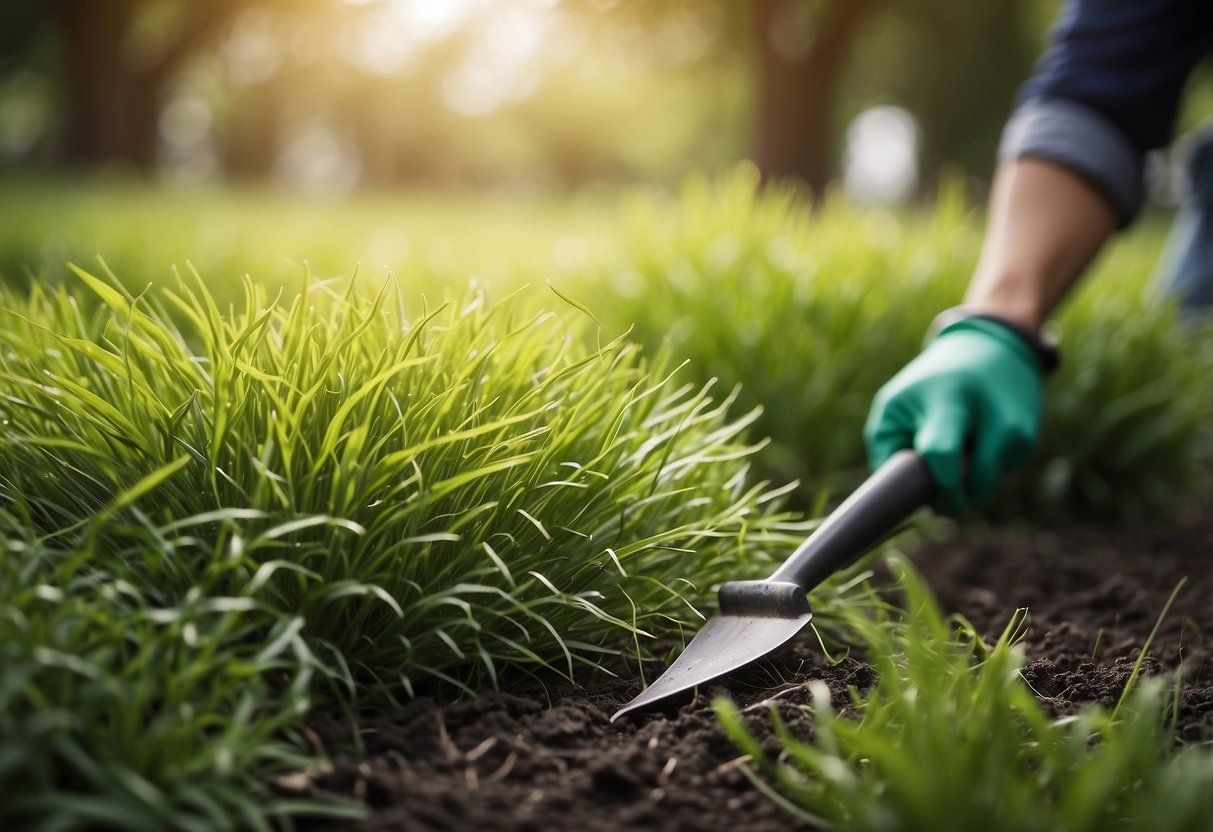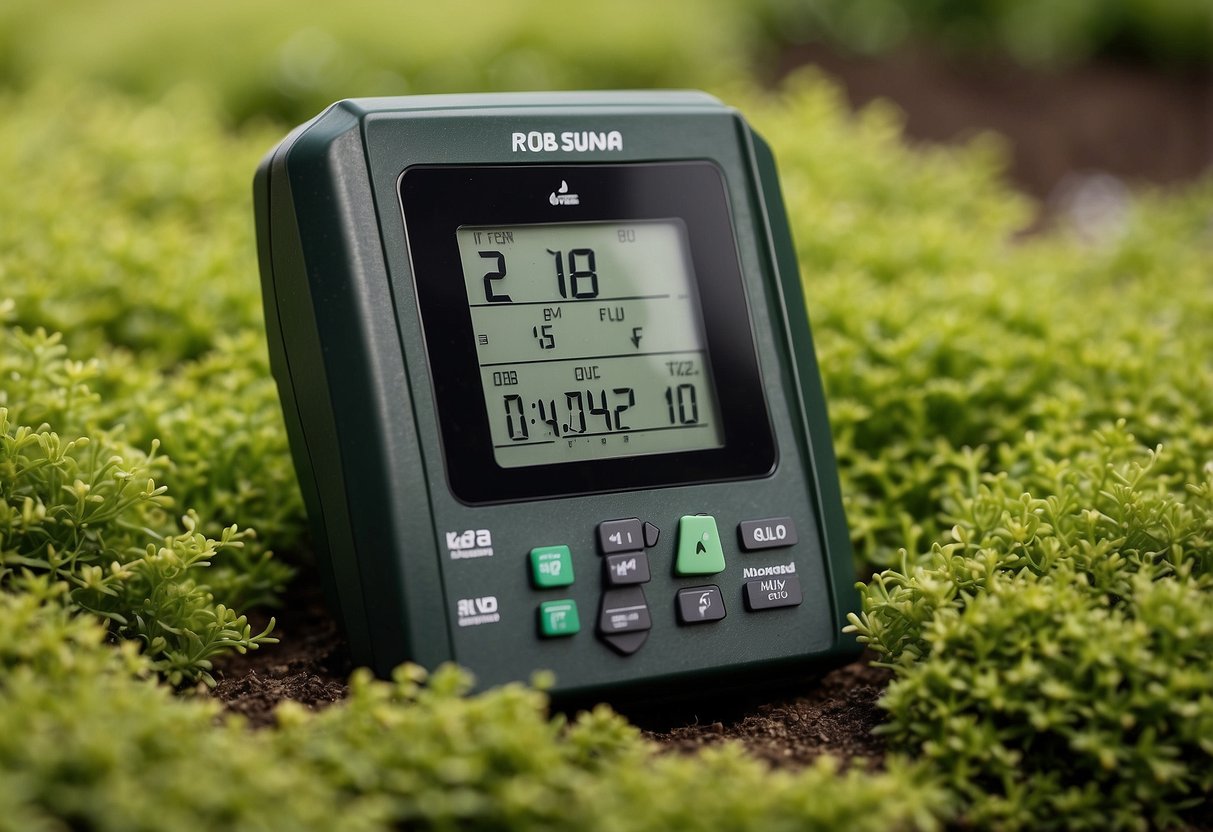Turfing Garden Tips: Simple Ways to Achieve a Lush Lawn
Creating a lush, green lawn can transform any garden space into a welcoming outdoor haven. Whether you’re starting from scratch or refreshing an old lawn, turfing is a simple yet effective way to achieve that perfect grassy look. Taking the time to lay turf properly ensures a healthy and beautiful lawn that can be enjoyed year-round.

By following some essential tips and techniques, you can make the process of laying turf much smoother and more successful. This guide will provide you with practical advice and step-by-step instructions to help you create a vibrant lawn that enhances your garden’s appearance and usability.
1) Remove Old Grass

Before laying new turf, you need to get rid of the old grass.
Start by cutting the grass into small squares with an edger. This makes it easier to handle.
Use a shovel or a garden fork to lift the old sod. Place the removed grass in a wheelbarrow for disposal.
For quick removal, you can use a sod cutter. Adjust the blade height to 1-1.5 inches to remove the grass and roots.
For more information on tools, check out this guide.
2) Level the Soil

First, clear the area of debris and rocks. You want to start with a clean slate.
Next, use a rake to spread the soil evenly. Focus on removing any obvious high or low spots.
Consider using the stomping method to further level the soil. Walk over the area sideways to compact it.
3) Choose Quality Turf

Picking the right turf is crucial for a beautiful lawn. Look for turf that is healthy and free of weeds. It should have a vibrant green color and strong roots.
There are various types of turf to choose from. For example, Kentucky Bluegrass is popular for its rich color and texture. Always match the turf type to your climate for best results.
4) Use Starter Fertilizer

Applying starter fertilizer can give your new lawn a strong start. It’s packed with nutrients that help seedlings grow.
Start by spreading the fertilizer evenly over the soil. For the best results, work it about four inches into the ground.
Be careful not to overdo it. Using too much can burn your grass. Stick to 0.5 to 1 pound of nitrogen per 1,000 square feet, as suggested by experts.
5) Lay the Turf Neatly

Start by placing the first roll of turf along the longest edge of your garden.
Make sure to lay it parallel to this edge for a clean look.
Press the turf down lightly with your hands to ensure good contact with the soil.
Stagger the joints of each row, like a brick wall.
This helps prevent gaps and makes the lawn stronger.
Use a sharp knife or spade to cut any excess turf for a perfect fit.
6) Water Immediately

After laying new turf, it’s important to water it right away. This helps the roots settle into the soil.
Use a sprinkler system to evenly water the lawn. Aim for about 1-2 inches of water. This depth ensures that the soil is moist and supports healthy growth.
For best results, water early in the morning. This minimizes evaporation and helps the grass absorb water effectively.
7) Avoid Walking on Fresh Turf

It’s important to avoid walking on new turf for the first few weeks. This helps the grass roots settle into the soil without disruption.
If you need to access parts of your garden, lay down wooden boards to spread your weight. This prevents any damage to the fresh turf.
Be patient, and your lawn will reward you with healthy growth!
8) Trim the Edges

Trimming the edges of your lawn gives it a neat look. Start by using a half-moon edging tool. This is great for re-cutting edges in the spring. For straight edges, cut along a plank of wood. For curves, follow a rope laid on the edge of the lawn.
A string trimmer can help around garden beds and trees. If you have obstacles like rocks or shrubs, be careful. Manual hand trimming might be needed in delicate areas.
9) Roll the Lawn

Rolling the lawn is important to achieve a smooth and even surface.
Use a roller filled with water or sand. Roll in a back-and-forth motion, overlapping each pass by about half.
Avoid rolling too heavily, as this can compact the soil and harm grass roots. This is especially important if you are preparing the soil for new turf.
10) Monitor Soil Moisture

Keeping an eye on soil moisture is key to a healthy garden. You can use a soil moisture meter to check if your plants need watering. Most meters have a scale from 1 to 10, indicating how wet or dry the soil is.
Make sure to insert the probe into the soil, not just water. If the meter reads dry while the soil is wet, it might be broken. Some meters even measure pH levels and light exposure.
Choosing the Right Grass Type

Picking the right grass for your lawn depends on various factors such as climate, soil, and how you plan to use your lawn. You will need to understand the differences between cool-season and warm-season grasses and think about the climate in your area.
Cool-Season vs Warm-Season Grasses
Cool-season grasses thrive in cooler climates and grow best in the spring and fall when temperatures are between 60° and 70°F. Kentucky bluegrass, fescue, and ryegrass are popular choices. These grasses stay green most of the year but can turn brown in hot, dry summers. They often need extra watering during these periods.
Warm-season grasses, like Bermuda, Zoysia, and St. Augustine, do well in hotter climates. They flourish in temperatures between 80° and 95°F and are more drought-resistant. These grasses usually turn brown during the colder months but rebound quickly when the temperature rises.
Climate Considerations
When choosing grass, think about the climate in your area. If you live in a region with hot summers and mild winters, warm-season grasses are ideal. For areas with cold winters and moderate summers, cool-season grasses are better. Areas in between, known as the Transition Zone, might require a mix of both types.
Also, consider the amount of sunlight your lawn gets. Most grasses need full sun, but there are varieties suitable for partial shade. Testing your soil’s pH and nutrition levels can also guide you in selecting the best grass type. Most grasses prefer soil with a slightly acidic pH of 6.0 to 7.0. Adjust pH levels using lime or sulfur if needed.
For more detailed information, you can explore sources like Better Homes & Gardens or Epic Gardening.
Preparing the Soil

Getting your soil ready for turf involves testing and improving the soil, as well as removing any existing vegetation. Proper preparation helps ensure your new lawn will grow healthy and strong.
Soil Testing and Improvement
Before you start, it’s important to test your soil. Use a soil testing kit to check for pH levels and nutrient content. This will help you understand what your soil needs. Ideal soil pH for turf is typically between 6.0 and 7.0.
If your soil is too acidic, add lime; if it’s too alkaline, add sulfur. Additionally, consider mixing in organic matter like compost to improve soil structure and drainage. Better soil means better root growth, leading to a healthier lawn.
Removing Existing Vegetation
Remove old grass, weeds, and debris from your garden area. Start by cutting existing grass very short and then using a shovel or sod cutter to remove it. This helps create a clean slate for your new turf.
Next, use a rake to clear away stones, roots, and other debris. Make sure the surface is as smooth and even as possible. This will make laying the new turf easier and ensure it takes root more effectively.
Laying the Turf

To create a lush and even lawn, start by measuring and ordering the right amount of turf. Then, follow proper installation techniques to ensure the turf is laid correctly and takes root.
Measuring and Ordering Turf
Begin by measuring the area where you plan to lay the turf. Use a tape measure to get the length and width of the space. Multiply these numbers to find the total square footage.
Add an extra 10% to your total to allow for cutting and wastage. This little cushion helps avoid coming up short. Once you have your measurements, order the turf from a reliable supplier. It’s best to have it delivered the day before you plan to install it.
Prepare the soil by removing weeds, rocks, and any debris. Level the soil to create a smooth surface. Once the turf arrives, aim to lay it within 24 hours to keep it fresh and healthy.
Installation Techniques
Start at one edge of your garden and unroll the first piece of turf along the longest straight edge. Make sure the longest side of the turf is parallel to this edge. Press the turf gently into the ground with your hands to ensure good contact.
Continue laying each piece tightly against the previous one, staggering the joints like a brick wall to avoid visible seams. Lay turf on slopes horizontally to improve water retention.
Use a sharp knife or spade to trim any excess turf and fit it snugly around any curves or obstacles. After laying all pieces, press down the turf with a roller to remove air pockets and encourage the roots to make good contact with the soil. Finally, water the new turf thoroughly to help it settle in.







